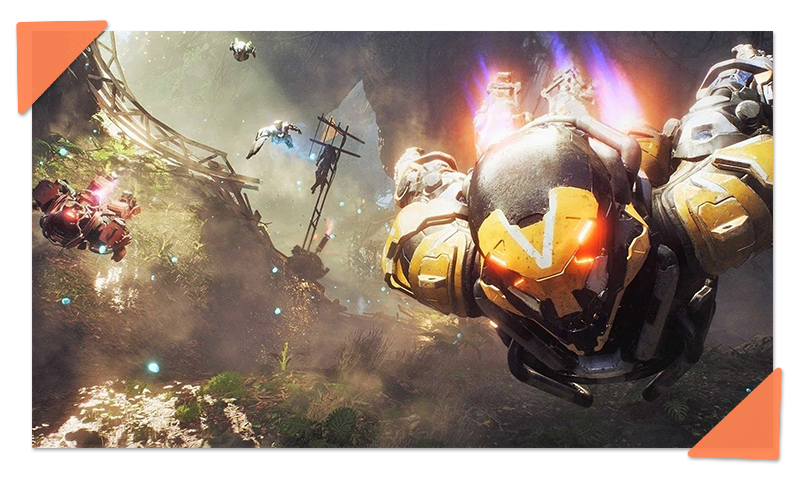‘Follow The Fun’ is a Trap
When the ubiquitous development advice doesn't work, and what to do instead
Fail Faster and Follow the Fun is a fantastic alliteration you frequently hear in game dev circles.
In just six words, we’ve got a whole development strategy designed to address the biggest fear of any developer: spending a lot of time to create a game that just isn’t good. A simple mantra for a powerful mindset: when you’ve got an idea, prototype it immediately and playtest it.
If it’s crap, throw it away, you learned a good lesson at minimal cost. If not, congrats: list the areas of fun and work towards expanding those. You either win or don’t lose; how awesome is that? Surely everyone in the industry must agree with the mantra (they usually do…) and apply it in their job routine (… they usually don’t).
Indeed, as you may expect, the reality is more nuanced than a catchphrase can convey in six words. When a recipe looks too easy, it’s suspicious.
Even worse, some people divert it and somehow make it say the opposite, leading to disaster. I’ve had trouble working with this approach on personal projects and had questionable experiences in my professional life, too: here’s what I learned about iteration, when and why it works (or doesn’t) and how to leverage its fantastic potential.
The Limits of Human Creativity
Making games, or innovative consumer products in general, is a backloaded process: you only truly know if the consumer enjoys it after you’ve built it. You can use all the tricks in the book to predict success (and you should), but still, you never get a specification from your clients that tell you everything that should be included or not. Players have wildly different expectations and like to be surprised. It’s your job to design something you confidently think can find an audience. That is a considerable risk since the development of a game takes a lot of time, energy & resources.
So, to seek early reinsurance and encounter the problems while they’re still solvable, we create intermediate versions that resemble the desired final result -with caveats and limited scope- and play it in similar conditions to eventual consumers (internally first, then through external playtests). These sessions are helpful in discovering that features do not fit as well as you imagined; maybe there are some problems you didn’t anticipate, and sometimes it unexpectedly turns out better than you imagined. No problem, now you know it and can work on concrete improvements.
However, confronting our work with negative feedback is challenging for our self-serving brains. We get attached to ideas while they live in our minds because, until contested, they always feel better than they are. The attachment is a trap. It drives us to dismiss criticism and to keep finding reasons why the tangible prototype isn’t comparable to the intangible concepts we have in our mind (”the idea is great, the prototype just needs this, this and that to be better”). The longer we stay attached, the harder it gets to face reality.
The ‘Follow the Fun’ philosophy directly contradicts our natural human bias as it encourages us to stay in the passenger seat for once. We’re still creators, it’s not about letting feedback decide for us, but we try to observe the direction the game drives us, not where we want to go. Doing prototypes faster reduces the emotional attachment and the sunk cost fallacy: it’s still tricky to get the necessary distance, but with a fully open mind, there is a good chance we notice dead ends and unexpected opportunities.
Why It Can Fail
Presented as such, the strategy looks solid & rational, however, since it still involves several human decisions, there are at least three ways it can fail.
#1 - Anything can be fun
As a lead designer, I like to use the analogy “playing football with a can” to explain to colleagues that anything can be fun. If you have never tried, playing football with a can is super enjoyable because 1/aiming & shooting things are intuitively satisfying for humans (for some reason), 2/erratic bouncing creates unpredictable situations, and 3/you’re laughing with friends. The whole activity is fun, but the can on itself isn’t. If you were to develop an entire sport around it, chances are it won’t find an audience.
The same can happen for a video game. When testing a multiplayer or a silly gameplay prototype, you may feel entertained and yet your design might not have anything to do with the fun. Basically, people aren’t always great at understanding the origin of fun; thus, sometimes, “following the fun” might lead you to gimmicky dead ends.
#2 - You can’t always fail fast
Some games & even whole genres aren’t good enough as early prototypes to properly assess if they work.
For instance, highly systemic games (management, 4X, cards, etc.) require a lot of content, inter-connected systems, some balancing and polished enough UX before you can adequately assess their fun. There was a Reddit post (which inspired me to write this article) explaining how a team had a vision for an RTS, but playtesters didn’t like it much, so they steered towards tower defense.
In this case, ‘following the fun’ meant focusing on the more immediate fun because it’s what stands out in an early prototype. Enjoying strategy & assessing depth in an early version requires a lot of projection, which is almost the opposite of the method. Don’t get me wrong; it doesn’t mean you should not seek to confront your ideas, just that if you can’t “fail fast” in a harmless way, you should approach “follow the fun” differently.
#3 - It’s a guide, not a religion
The worst misuse of the strategy is when it serves as an excuse for taking the wrong direction with a product: “Trust us, we’re not there yet, but in the end, it’ll be fun”. It seems to happen more frequently than it should in AAA; some even have a name for it, such as the “Bioware Magic”, as reported by Jason Schreier in his in-depth report on the failure of Anthem.
In a way, it’s recognizing that games aren’t fun at the beginning, but that devs have the power to make anything fun eventually (they don’t). Turnarounds happen frequently, and if you’ve shipped games before, you know how things improve rapidly towards the end. However, using “follow the fun” as an excuse not to challenge concepts early is as risky as it sounds. Some fundamental issues are cursed and can never be fixed.
What You Should Instead
If you feel like your game may fall into one of these traps, here are three ideas to approach « Follow the fun » differently (sorted from most to least controversial).
Follow the Fun … on a Design Document
I know this is the opposite of the enjoyable rapid prototyping strategy we all love, but hear me out.
If you can’t write a short document to convey the intentions of the mechanic/system and get people excited about it (yourself included), how will it be fun in the game? Just write what you have on your mind, leave it to rest for at least a week and come back. What is the more interesting aspect of it? Can you emphasize it? What’s the least? Can you scrap it?
It takes more projection efforts, but since it costs fewer resources, you should also feel liberated to eliminate anything that doesn’t bring enough joy. Don’t write okay-ish designs and hope to turn them around through prototype iteration. Fail faster.
Follow a Variety of Fun
As explained in the first part, we tend to get too attached to our ideas, to the point we corner ourselves to conceiving a single possibility. While confidence is great, it can be an efficient technique (although less fast) to also brainstorm and prototype alternatives.
Artists work this way all the time, making several sketches before picking the one they prefer and enriching it with the good parts they noticed from the discarded ones. Even if you have a preference from the start, exploring different directions can help reinforce the selected concept and reinsure you. Knowing you have fallback alternatives can be liberating to dig into the exotic options: if it goes poorly, you can always return to the safer plan.
Follow the Fun of the Fun
Finding the fun is easier when you already have an idea of what it looks like. Using the method to discover new fun mechanics out of the blue is a tricky endeavour for inexperienced devs. For instance, if Ubisoft Montreal didn’t release Assassin’s Creed with its flaws, I’m not sure they could have figured out all the improvements needed to elevate the franchise and make a fantastic sequel.
I’ve heard once in a conference that a game evolves so rapidly that even the team making it has an entirely new understanding every three months or so. To create additional content and expand on solid foundations, it might be better to wait until you’ve released a decent initial version and let the dust settle in. Trying to get all the answers too early is as risky as hoping they’ll all come magically at the end.
Wrap Up
You know the problem with doctrines: when they are too simple, they turn into religious scriptures that need to be analyzed to become useful (like I just did…). If you’re at the beginning of your career and didn’t form a strong opinion yet, I’d always advocate maintaining distance with whatever you read or learn about game dev.
Use several sources, and analyze your experiences. There’s no one-size-fits-all here: don’t prototype for the sake of it, and don’t spend forever waiting for the perfect idea. There’s a right in-between for each project, and it’s part of the job to figure it out. Good luck, and have fun!















Where's the button to report this article, because i'm in it and i don't like it haha. Jokes aside, great article i would love more of this kind after your vacation :D
However i'm not sure to understand the conclusion when you say :
"If you’re at the beginning of your career and didn’t form a strong opinion yet, I’d always advocate maintaining distance with whatever you read or learn about game dev."
A stong opinion about the mantra "Follow the fun" right ? So if i don't want to follow the mantra blindly as my new religion i should take my distance a bit with gamedev stuff ? ^^" I think i'm completely missing the point but i would like to understand